Reasons for choosing Seiko Astron
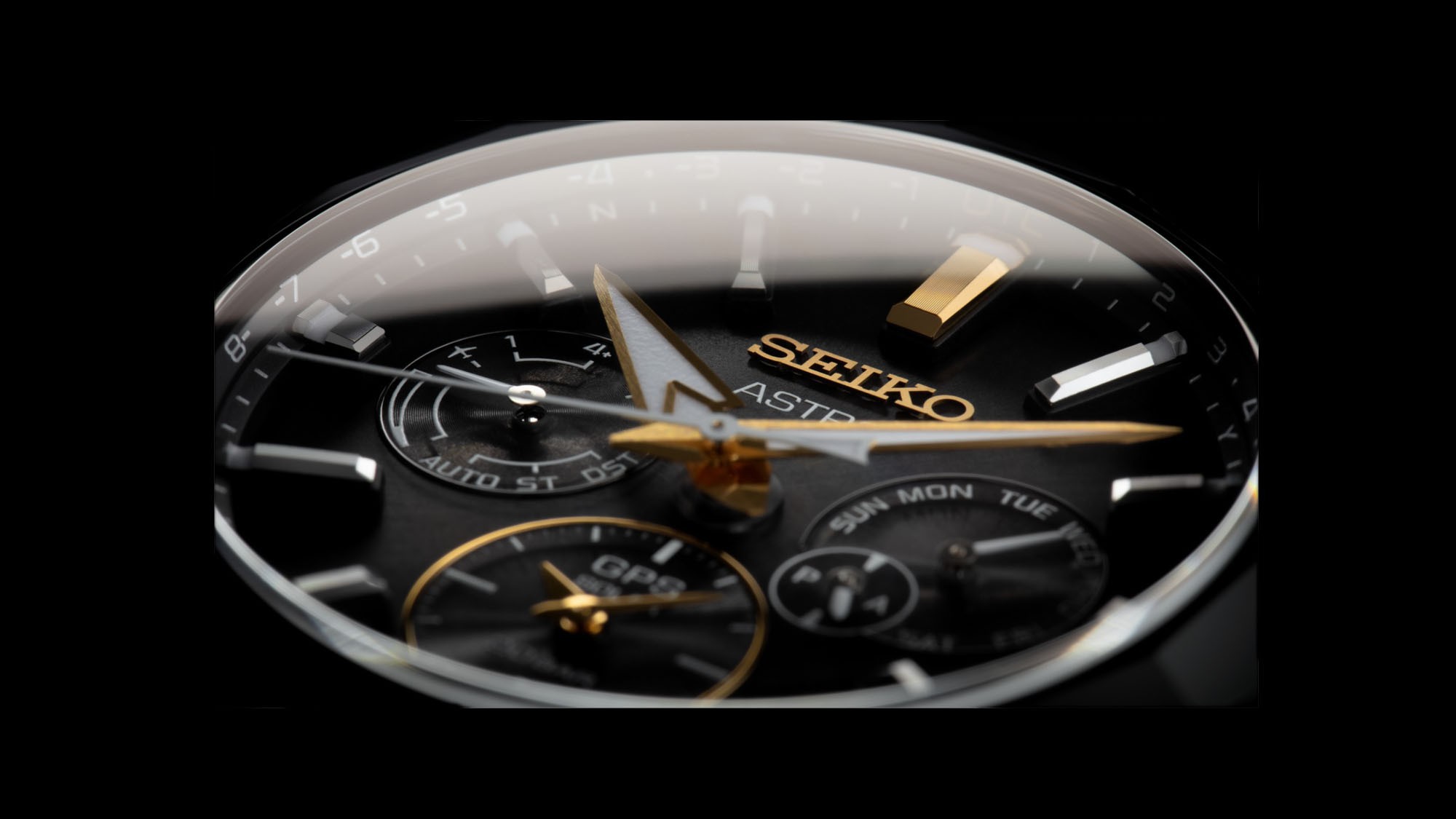
Photographs by Eiichi Okuyama
Text by Tomoyo Takai
“ALWAYS ONE STEP AHEAD OF THE REST”
On December 25, 1969, Seiko marketed the world’s first quartz wristwatch, the Seiko Quartz Astron 35SQ. It was a watch that triggered a revolution which changed the face of the global watchmaking industry. In 2012, Seiko launched another game-changing watch, starting its second revolution. It was another world’s first, the Seiko Astron GPS Solar. This watch once again expressed the progressive spirit of the credo of Seiko’s founder, Kintaro Hattori, “Always one step ahead of the rest.” This new Astron set a new standard of super-high-precision innovation and, like its 1969 predecessor, followed the evolutionary path of taking a technology that existed in other forms and bringing it to the wrist in a watch that was lighter, thinner and smaller in volume than anything ever imagined before. Now, nine years later, Astron GPS Solar has taken this technology to a new level.
1860/1881
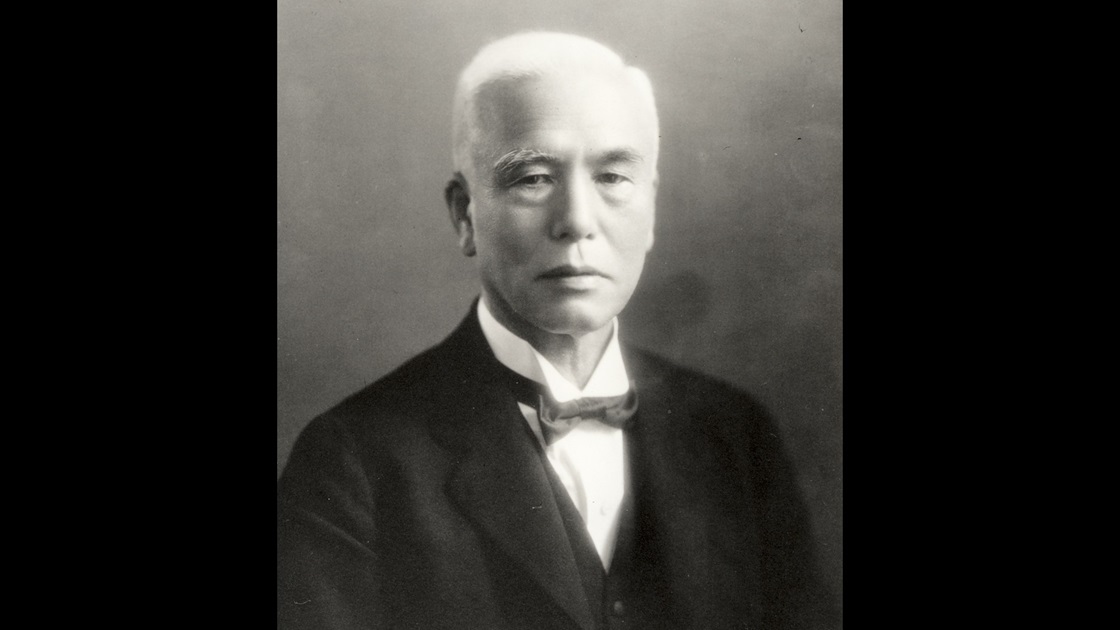
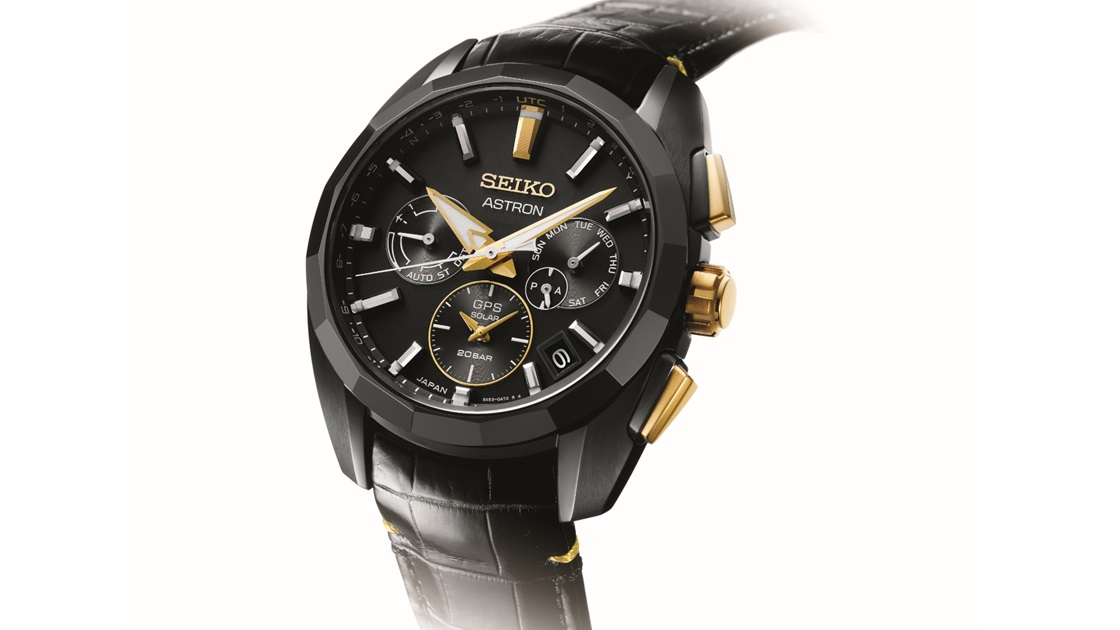
SSH073
This commemorative watch was launched on October 9, 2020, Kintaro Hattori’s birthday. It uses Caliber 5X and proudly offers the best performance in Astron history. The rugged black and gold titanium case has Seiko’s latest proprietary hard coating, which has a hardness that is roughly 1.5 times greater than all previous such coatings. The 16 facets on the robust zirconia ceramic bezel shine in tribute to each decade since the birth of Seiko’s founder.
GPS Solar (Cal.5X53). Ceramic bezel with titanium case (diameter 42.8 mm, thickness 15.6 mm). Water resistance 20 bar. Titanium bracelet. Limited edition of 2,500.
A cutting-edge timepiece that inherits the philosophy of Seiko’s founder, Kintaro Hattori
It was in 1873 that Japan adopted the time keeping system used in the West. As a result, this was an era of great change, a time at which the young and determined Kintaro Hattori, who had been born in 1860, decided that his future was in “precise and elaborate” watchmaking. Kintaro, who founded “K. Hattori & Co.” (today’s Seiko Watch Corporation) in 1881, knew that while the pocket watch was then considered the norm for portable timepieces, the time would come for wristwatches, and quickly began work on the development of one of his own, alongside the clocks and pocket watches that his company already produced. In 1913, he produced the first wristwatch made in Japan, the Laurel, a mechanical watch that was just 26.65 mm in diameter. From that moment on, Seiko’s leadership in the Japanese watch industry was established.
With its history of innovation, it is only apt that Seiko Astron GPS Solar, the latest manifestation of Seiko’s leadership in horological technology, would be chosen as the heart of the watch that would celebrate the 160th anniversary of the birth of the company’s founder, Kintaro Hattori. Using just the power of light, Astron GPS Solar connects to the GPS network and shows the local time with atomic clock precision in every time zone of the world. Just as in 1969, Astron GPS Solar sets a new standard that was made possible by the steady efforts of Kintaro’s successors’ and their dedication to the founder’s credo of being “Always one step ahead of the rest.”
1900
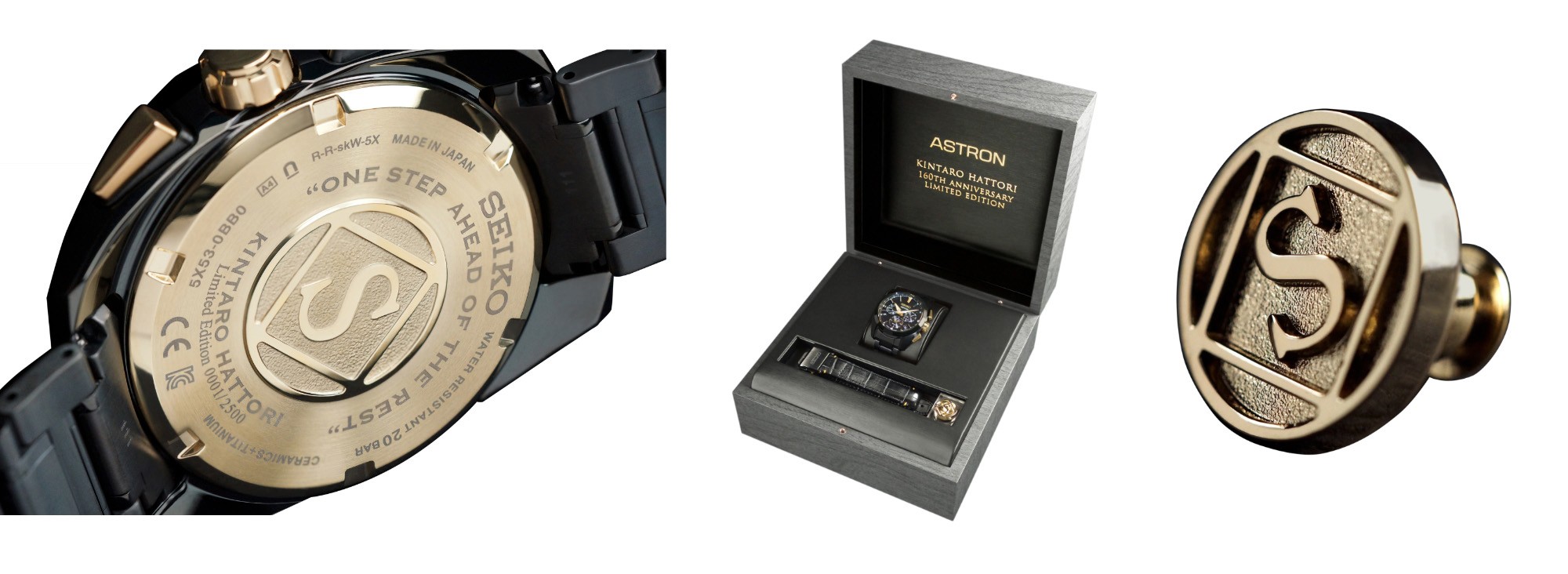
The significance of the 1900 trademark ‘S’
The case back of the Kintaro Hattori 160th Anniversary Limited Edition bears the trademark ‘S’ registered by Kintaro in 1900 for K. Hattori & Co, today’s Seiko Watch Corporation.
In 1895, five years before registering this trademark, Kintaro began to export the company’s wall clocks to other Asian markets and succeeded in making the company’s first pocket watch, the Timekeeper. Four years later, in 1899, Kintaro sought new ways to stay ahead by visiting and studying watchmakers in other countries. As soon as he returned from his travels to Europe and the USA, he introduced new world-class machine tools. Kintaro realized that he needed to have the ability to make all the components of his timepieces in-house and it was in 1900 that he really started on the road that would lead to the achievement of his goal. Kintaro was fond of saying to his staff, “Don’t run but always keep going” and this was the approach he took in his manufacturing strategy from that year forth.
1969
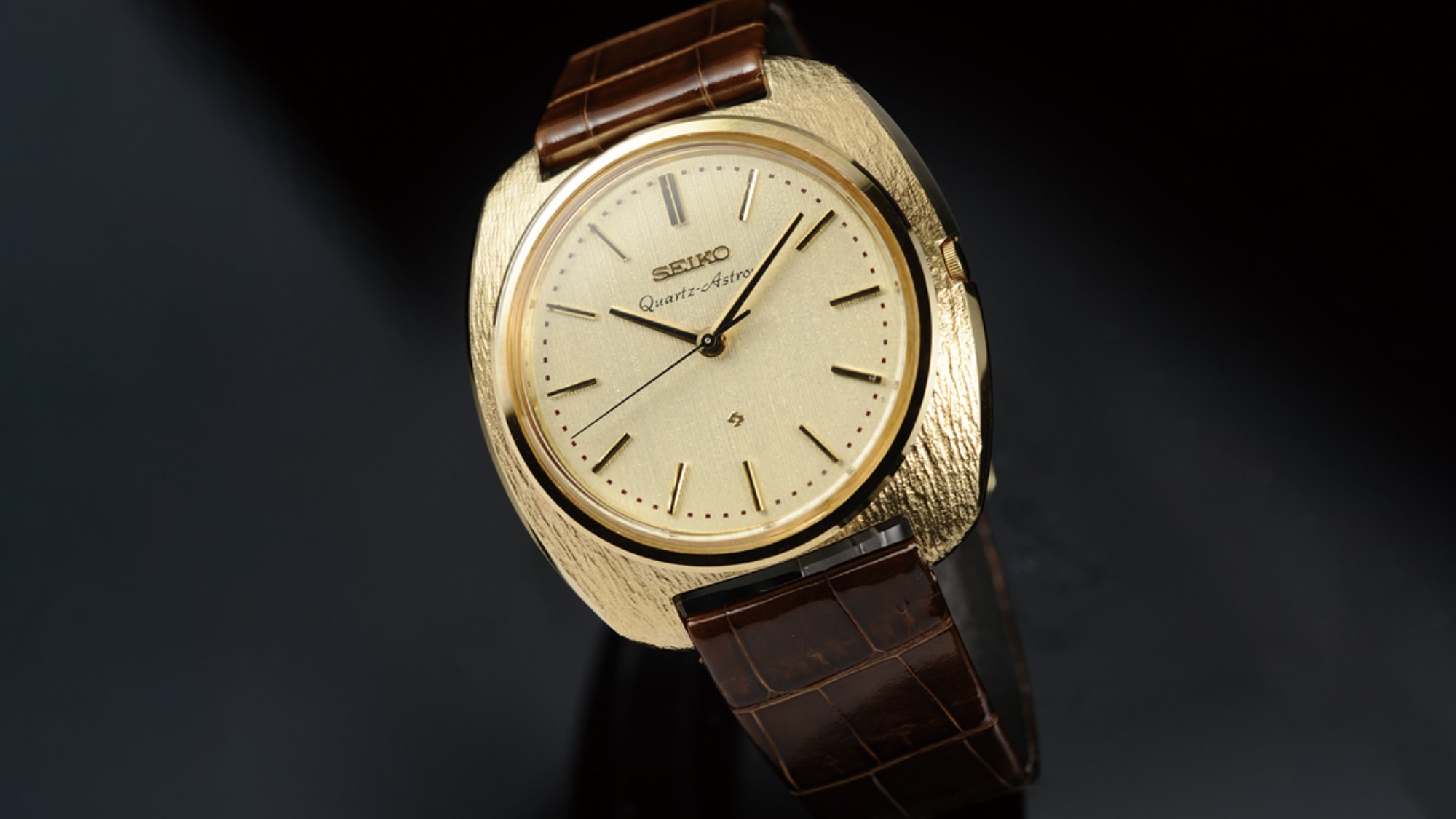
The first-generation Quartz Astron stuns the world.
In the 1960s, Seiko sought to develop the next-generation high-accuracy wristwatch, just like other watchmaking manufacturers in Europe and the USA. The idea of using a crystal oscillator in place of the balance wheel for the regulator used in mechanical watches was long known in the industry and it was this ‘quartz’ route that Seiko chose with the aim of creating a wristwatch that would be that many times more accurate than all existing watches. By 1958, Seiko was already producing a quartz clock that delivered a level of precision far greater than possible with any mechanical technology but it was the size of a filing cabinet. To reduce its volume by approximately 300 thousand times was a formidable task. However, Seiko defined quartz as the mainstream technology of the future and poured great efforts into its realization. By 1964, the year of the Tokyo Olympic Games at which Seiko served as the official timekeeper, the company had succeeded in creating a quartz chronometer that was the size of a tabletop clock. Finally in 1969, Seiko made a major advance in power reduction and had developed a stepping motor that made possible the world’s first practical quartz wristwatch. This watch was christened Astron, the ancient Greek word for star. On December 25, 1969, Seiko marketed the Quartz Astron 35SQ, the world’s first quartz wristwatch.
Once this breakthrough was made, developments came thick and fast. Seiko created the world’s first LCD watch and the world’s first quartz watch for women, the world’s first quartz chronograph and advances in manufacturing technology allowed Seiko to bring the revolutionary timekeeping technology of quartz to an ever-widening audience. With each new caliber, Seiko brought to within the economic reach of the whole world wristwatches that were far more accurate than anything that had come before. Seiko had indeed launched a revolution; the quartz revolution.
From 1969 to today.
The journey of Seiko Astron from quartz to GPS Solar.

2012 <7X Series>

SAST003
The starting point for the reimagined Astron was the 7X series that was released in September 2012. It featured a 24-hour dual-time display at the six o’ clock position and a power reserve indicator at the 10 o’ clock position. GPS Solar (Cal. 7X52). Ceramic bezel with titanium case (diameter 47 mm, thickness 16.5 mm). Water resistance 10 bar. Titanium bracelet.

The world’s first GPS solar watch
It was the beginning of the year 2000, more than 30 years since the launch of the Quartz Astron 35SQ and quartz was the dominant watch technology. The time had come for the next step forward. Seiko was eager to develop a high-tech wristwatch for a new generation and turned its attention to the hitherto impossible goal of combining its skills in solar power and its GPS capabilities in an analog watch that would look good in every situation. This was how the GPS solar watch began; as an attempt to achieve something just as revolutionary as the first Quartz Astron of 1960.
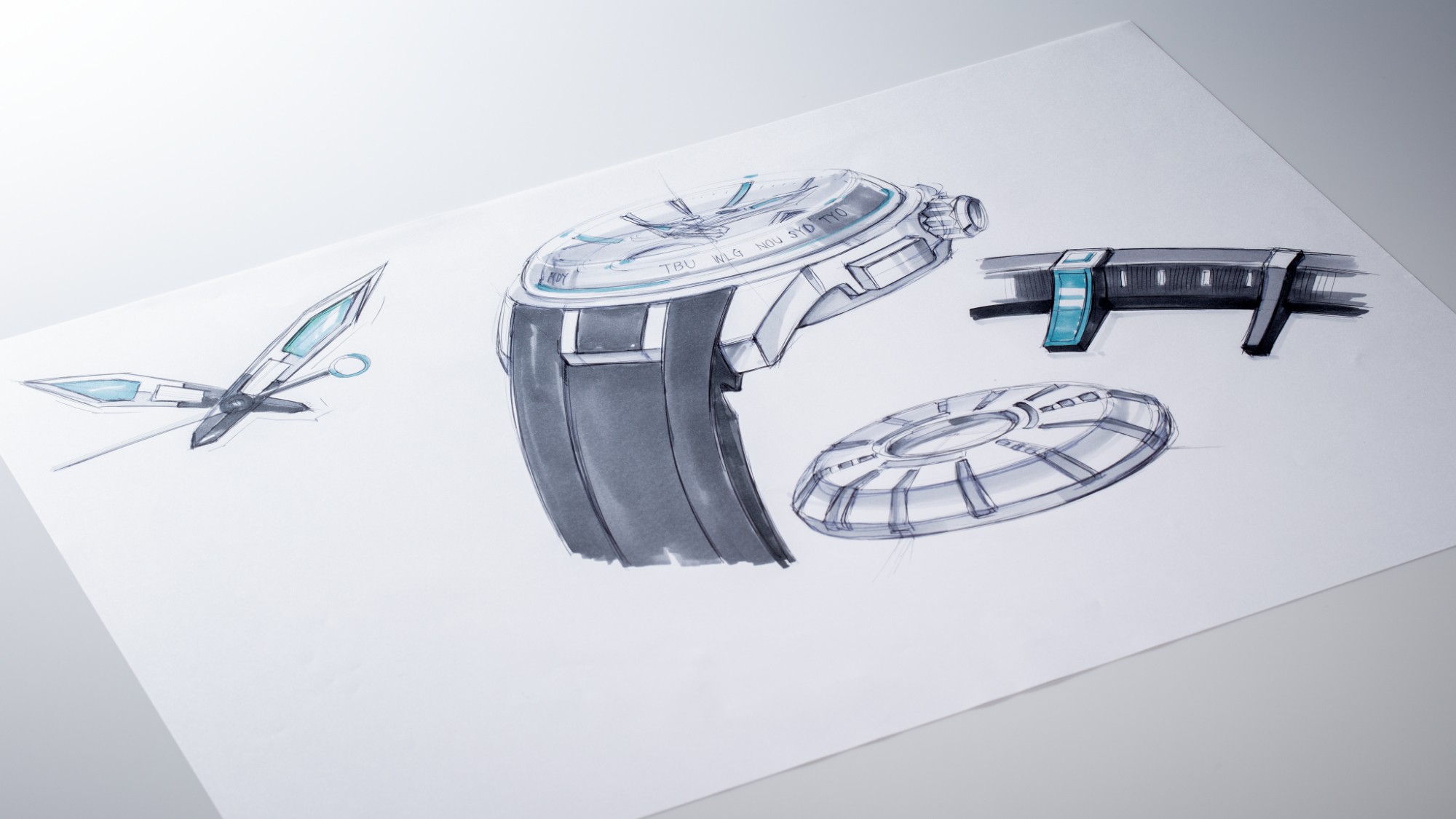
After several years of internal development, the project started full-swing in 2006. The group company Seiko Epson already had a proprietary GPS module and was mass producing handheld mobile GPS devices. The biggest hurdle was developing the receiver antenna. The existing patch antenna interfered with metal and so, in a watch, lowered its reception sensitivity. Another solution was required. The development team eventually found a way to mount the antenna inside a ceramic bezel, thus solving the interference issue. Approximately five years later, in 2011, they completed a 38-mm diameter ring antenna, and thus was born the world’s first GPS Solar watch movement, Caliber 7X.
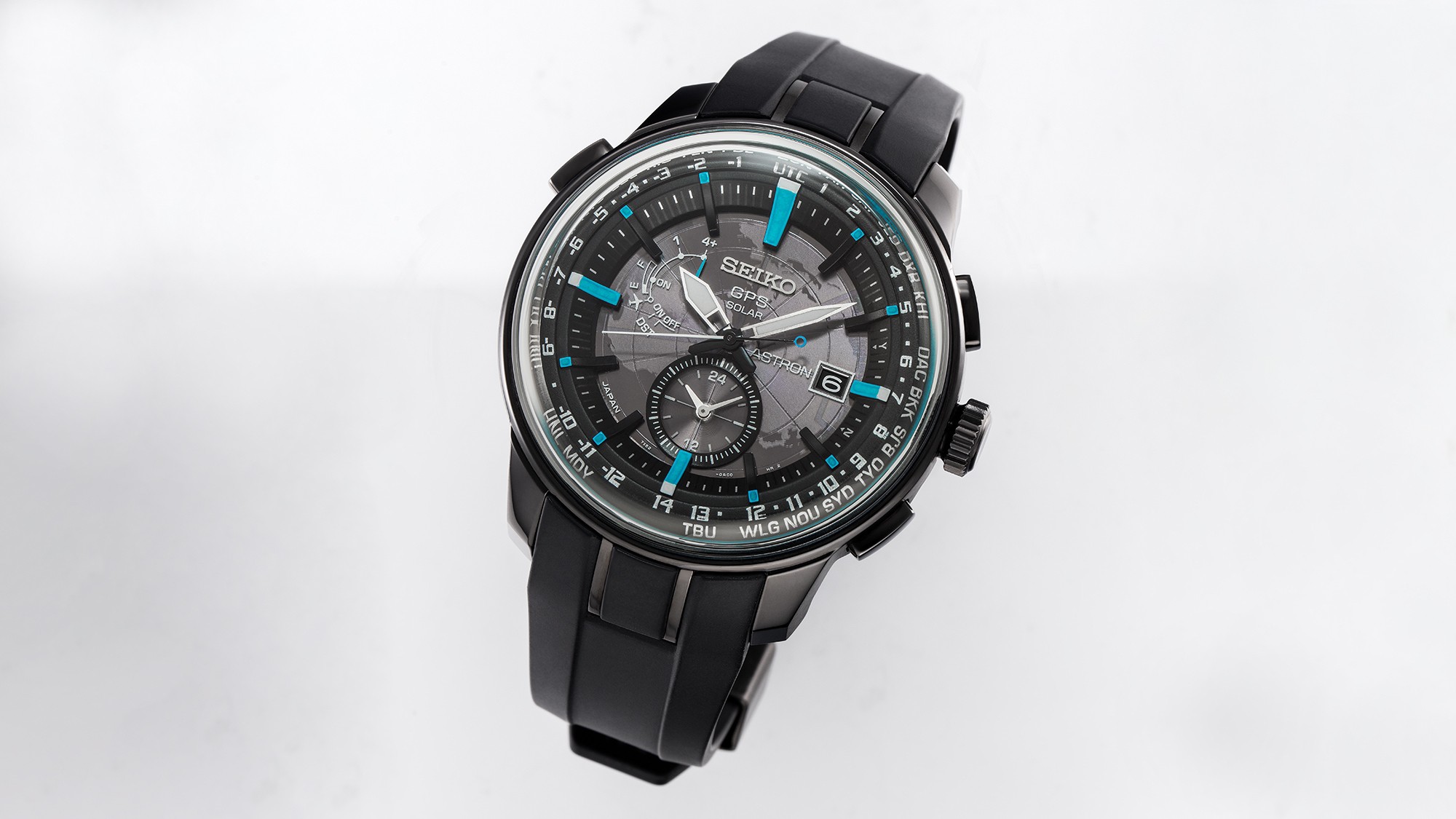
SBXA033
The dial for the first concept design model shows an image of the northern hemisphere as if drawn looking up from the center of the earth. This perspective, which is the mirror opposite of a normal map, was adopted to express the earth’s rotation in the clockwise direction. The white gradation on the polycarbonate dial is the result of meticulous calculation involving optimal light transmittance relative to the position of the solar panel inside. GPS Solar (Cal.7X52). Stainless steel case (diameter 48.2 mm, thickness 18.1 mm). Water resistance 10 bar. Reinforced silicone strap. Released in February, 2014. No longer in production
The ring antenna was a technical triumph but it brought with it some unique challenges. The diameter of the case that housed Caliber 7X needed to be larger than most watches of that time and having to embed the ring antenna inside the bezel left a wide space between the watch glass and the dial. It was Junichi Kamata of the Design Department who was tasked to bring the technology to the wrist in a design that met the criteria that Astron must be a watch for all occasions. Kamata managed to turn what looked like restrictions into turned features that showcased the advanced nature of the underlying technology. He used the space between the dial and watch glass to create a three-dimensional appearance that became an integral part of the Astron signature. The most striking aspect of the design was the hour markers. Their three-dimensional look and inward curve almost seem to suggest radio waves and light being welcomed into the watch, which was, of course, exactly what the GPS Solar technology delivered. Such was the visual uniqueness and attractive appearance of this design that it was used even in subsequent generations of Astron which used movements that were smaller. Kamata had created an important part of the identity of Astron that has passed the test of time.
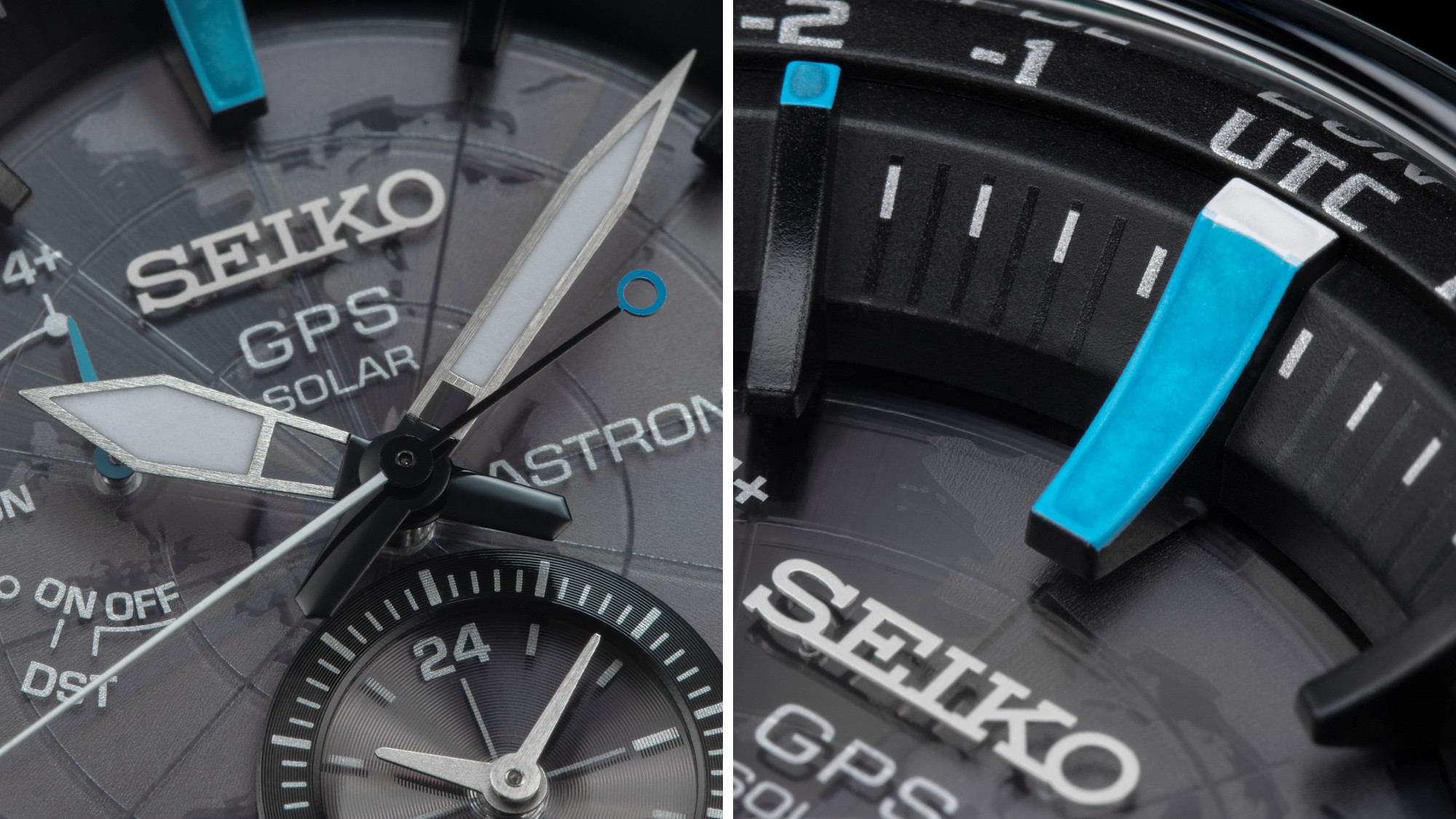
The new Astron GPS Solar was released worldwide on September 27, 2012. It was an important new landmark in horological history, a fusion of cutting-edge technology and avant-garde design that brought new levels of precision and convenience to the world of the wristwatch.
A year and a half after the first Astron GPS Solar, Seiko released a new design known among the team as Stratus which took the three-dimensional feel of the initial design to a new level. As its name suggests, the design was inspired by the stratosphere. It features a dome-shaped crystal that covers the entire face. The polycarbonate dial depicts the earth, and the sculpted profile of the hour markers give a sense of objects floating in space, creating the image of what it would be like to look down at the earth from outer space. The crystal was made of sapphire, which, because of its monocrystalline structure, is hard and difficult to form. Kamata says, “It took more than 10 hours just to finish one piece. I had to appease the design team, even beg on some occasions.” As difficult as the material was to handle, it should be noted that the designers managed to achieve a watch with high visibility despite the refraction of sapphire and 10 bar water resistance.
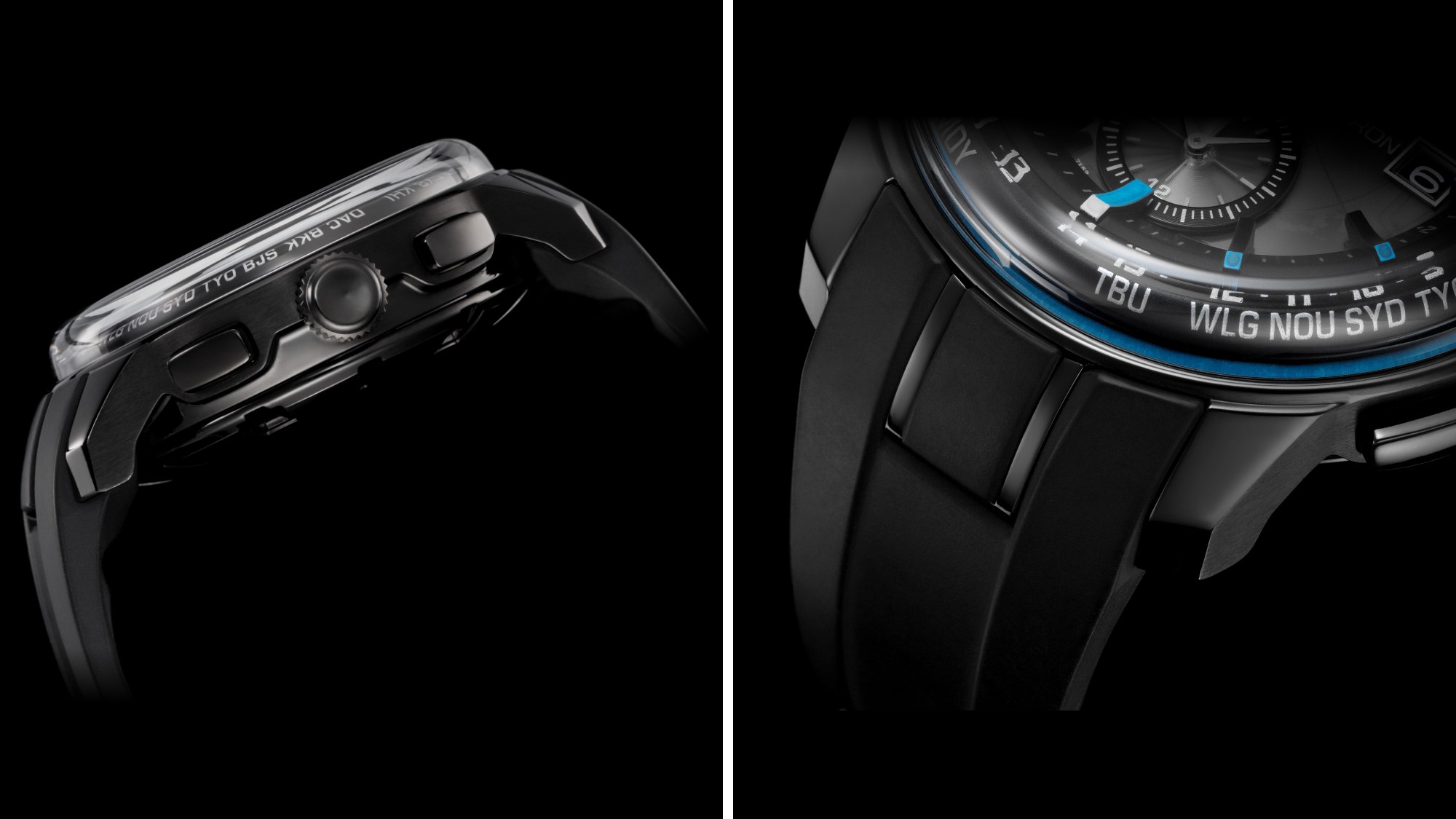
Right: The city names are indicated to designate the major time zones of the world. The curve of the sapphire crystal was optimized to achieve the precise refraction rate that allows them to be read without distortion.
2014/2015 <8X Series>
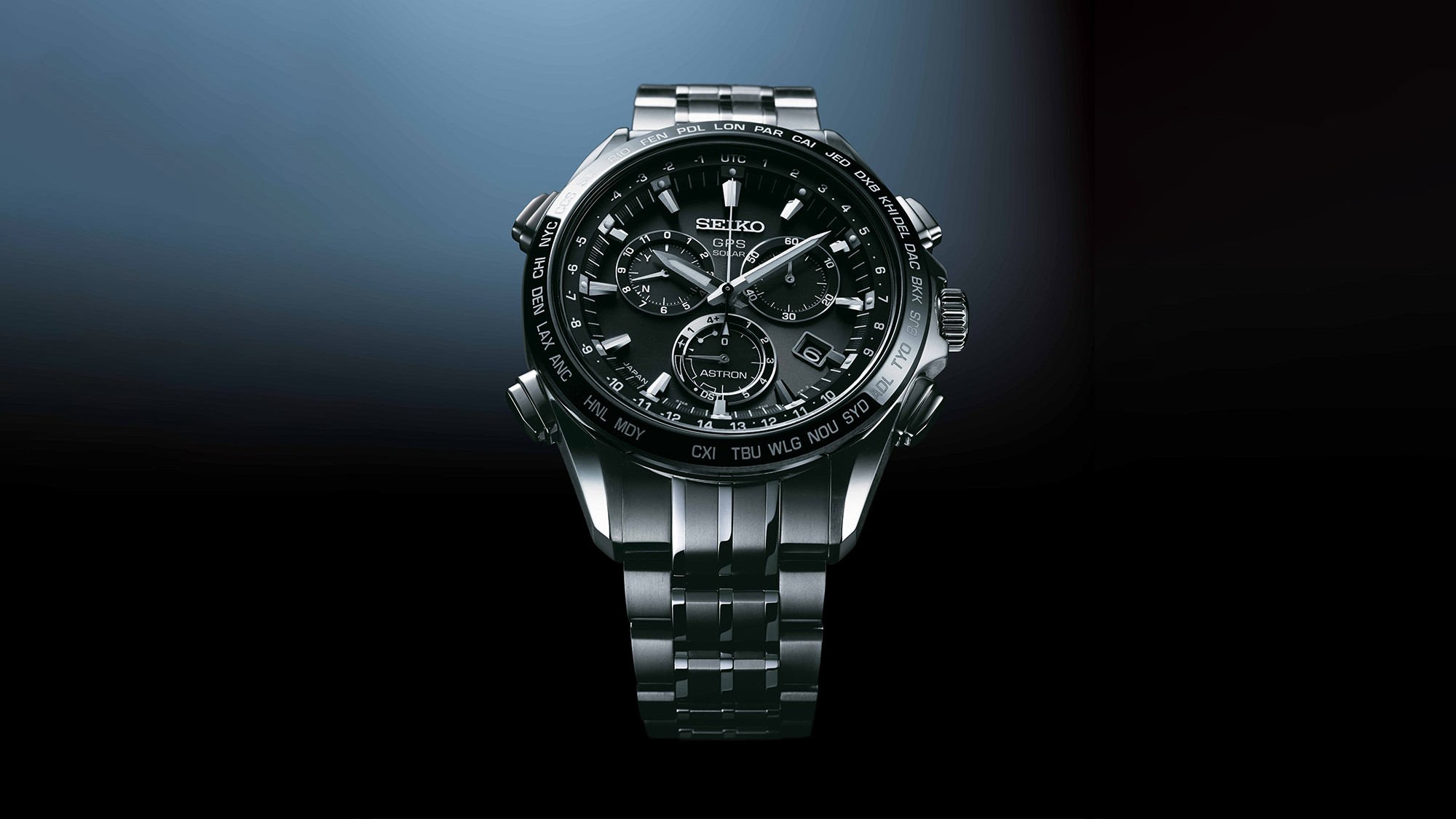
SSE003
This second-generation creation is powered by Caliber 8X, which has energy-saving characteristics that allow the addition of a chronograph function. The use of metal hour markers gives it a more powerful new look. GPS Solar (Cal.8X82). Ceramic bezel with titanium case (diameter 44.6 mm, thickness 13.3 mm). Water resistance 10 bar. Titanium bracelet. No longer in production.
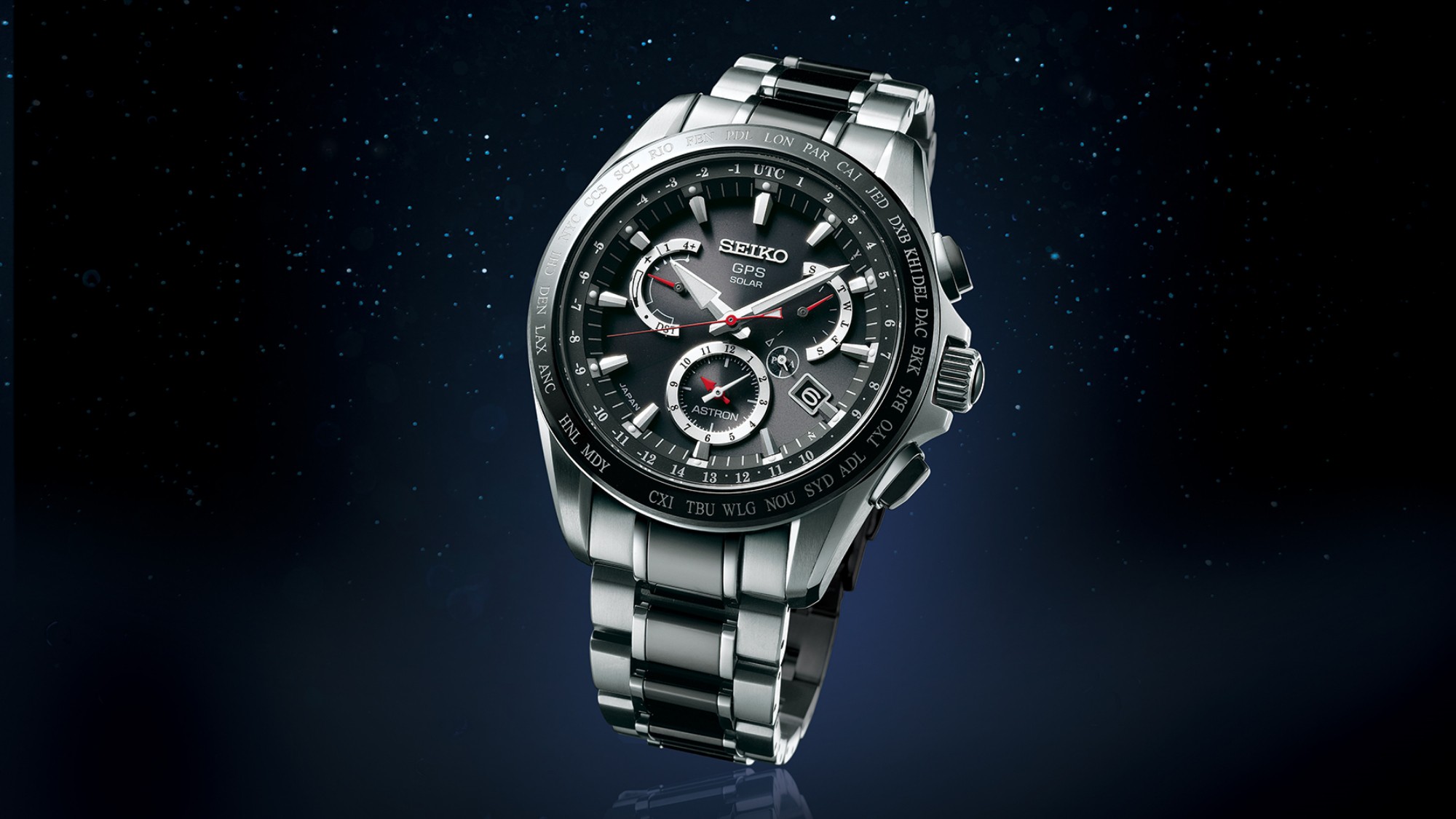
SSE041
This new version of Caliber 8X features dual-time functionality. Energy-saving developments made it possible to place a 12-hour dual-time small dial at the six o’ clock position. GPS Solar (Cal.8X53). Ceramic bezel with titanium case (diameter 45 mm, thickness 13.3 mm). Water resistance 10 bar. Titanium bracelet. No longer in production.

Energy-saving developments and major downsizing achievements expand the design horizons.
Caliber 8X was a breakthrough of great significance. It offered enhanced performance, reduced size and these advances made possible a wide range of new design possibilities, including several new color dials. The newly designed movement was 30% smaller and yet its reception performance and energy efficiency were both improved. This allowed for the addition of an elapsed time chronograph and other new features to be introduced. From a design perspective, Caliber 8Z greatly expanded the horizon but, at the same time, the visual identity established by the 7X series needed to be respected.
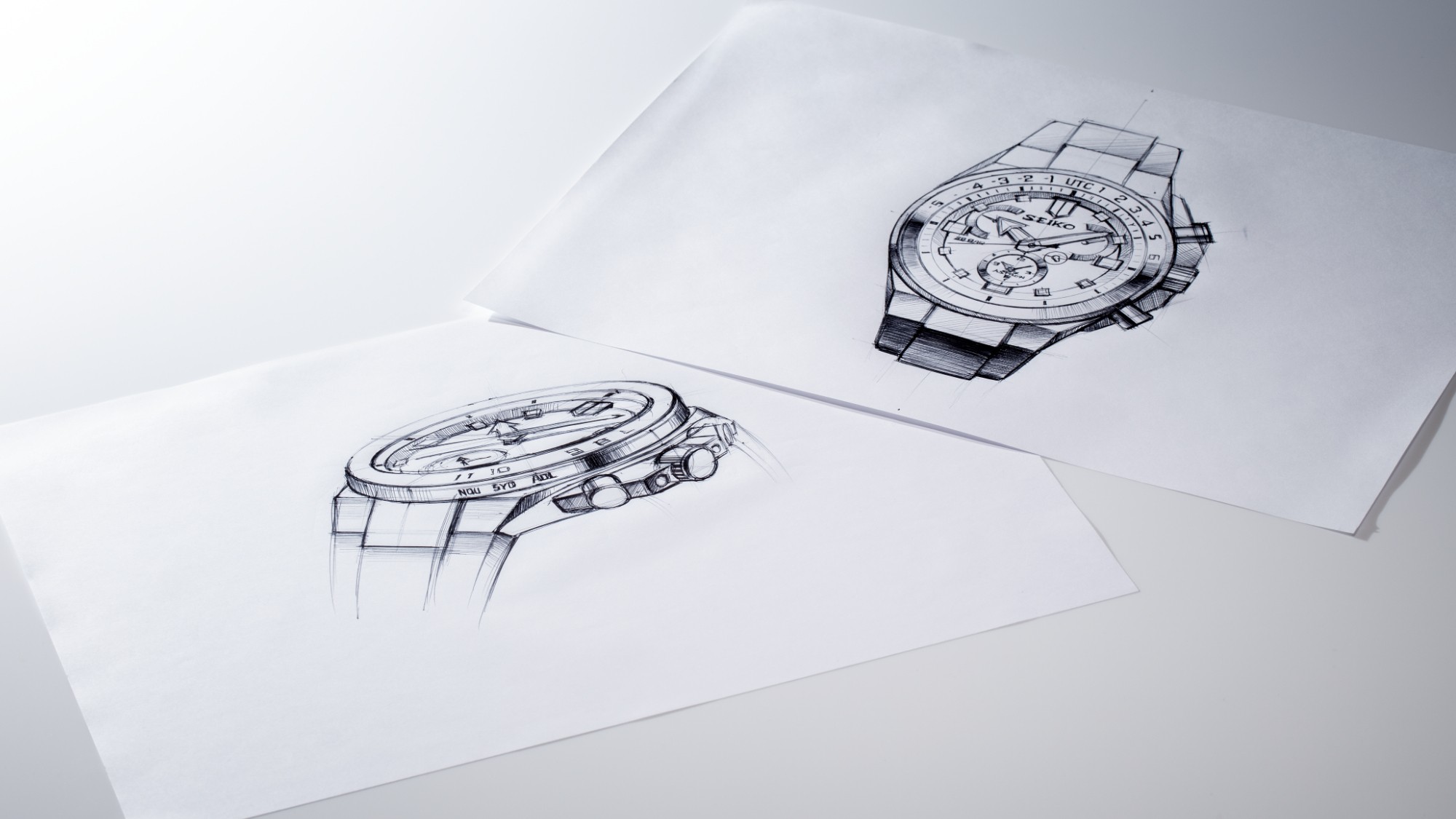
Takuya Matsumoto, the designer in charge of the 8X series comments, “The three-dimensional feel of the 7X series was well received so we followed this and focused on a design that expresses plenty of volume.” Matsumoto, aware of the expanding user base, used the keywords “on and off” as his design direction. He wanted to create a watch that was as well suited to weekend use as it was to the office. “The concept when development began was to target global business people. It had to go well with a suit and look good in business scenarios. But we also considered the time they spent away from work. So I tried to improve the look and feel while incorporating a sporty taste that would complement a stroll by the sea, a leisurely drive in the afternoon, or even a relaxed hour in an exclusive bar in the evening.”
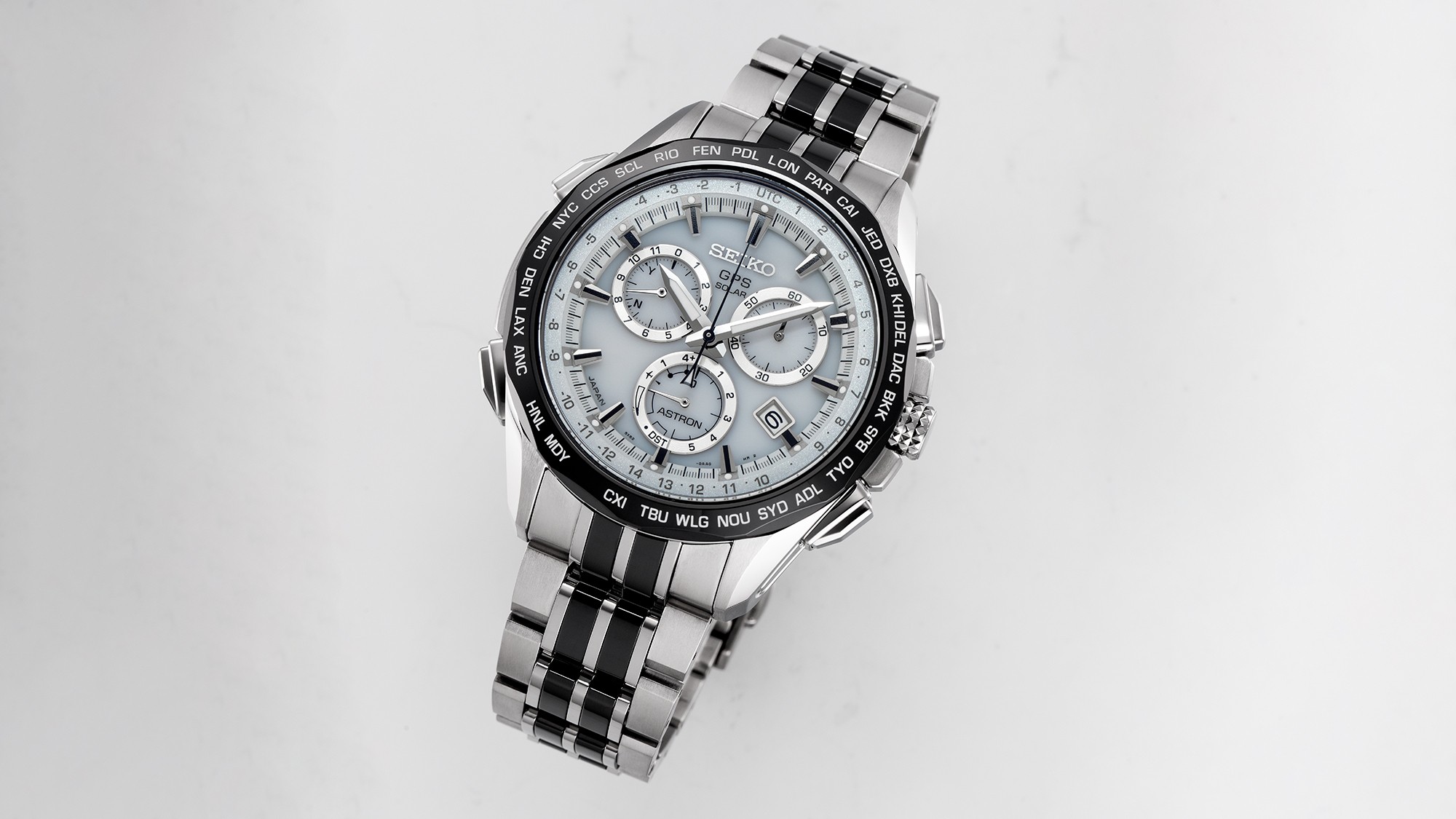
SSE001
This chronograph is the first Seiko Astron GPS Solar watch with a white dial. Improved charging efficiency made it possible to adopt a dial plate with roughly half the light transmittance of previous models. GPS Solar (Cal.8X82). Ceramic bezel with titanium case (diameter 45.0 mm, thickness 13.3 mm). Water resistance 10 bar. Titanium bracelet. Limited edition of 7,000 pieces. No longer in production.
SBXB001 is the watch that perhaps best demonstrates the advances that Caliber 8X delivers. The eye is drawn immediately to the striking white dial. The designers were able to use this solid white color because improvements in the charging performance doubled the light transmittance rate. This in turn allowed them to raise the density of the white so that, to the naked eye, the solar panel underneath is almost invisible. This, coupled with the crown guard and metal indexes, is what gives the watch its luxury sports watch look. The extra amount of LumiBrite applied to the hour and minute hands is also the result of energy-saving developments that increased the torque delivered by Caliber 8X .
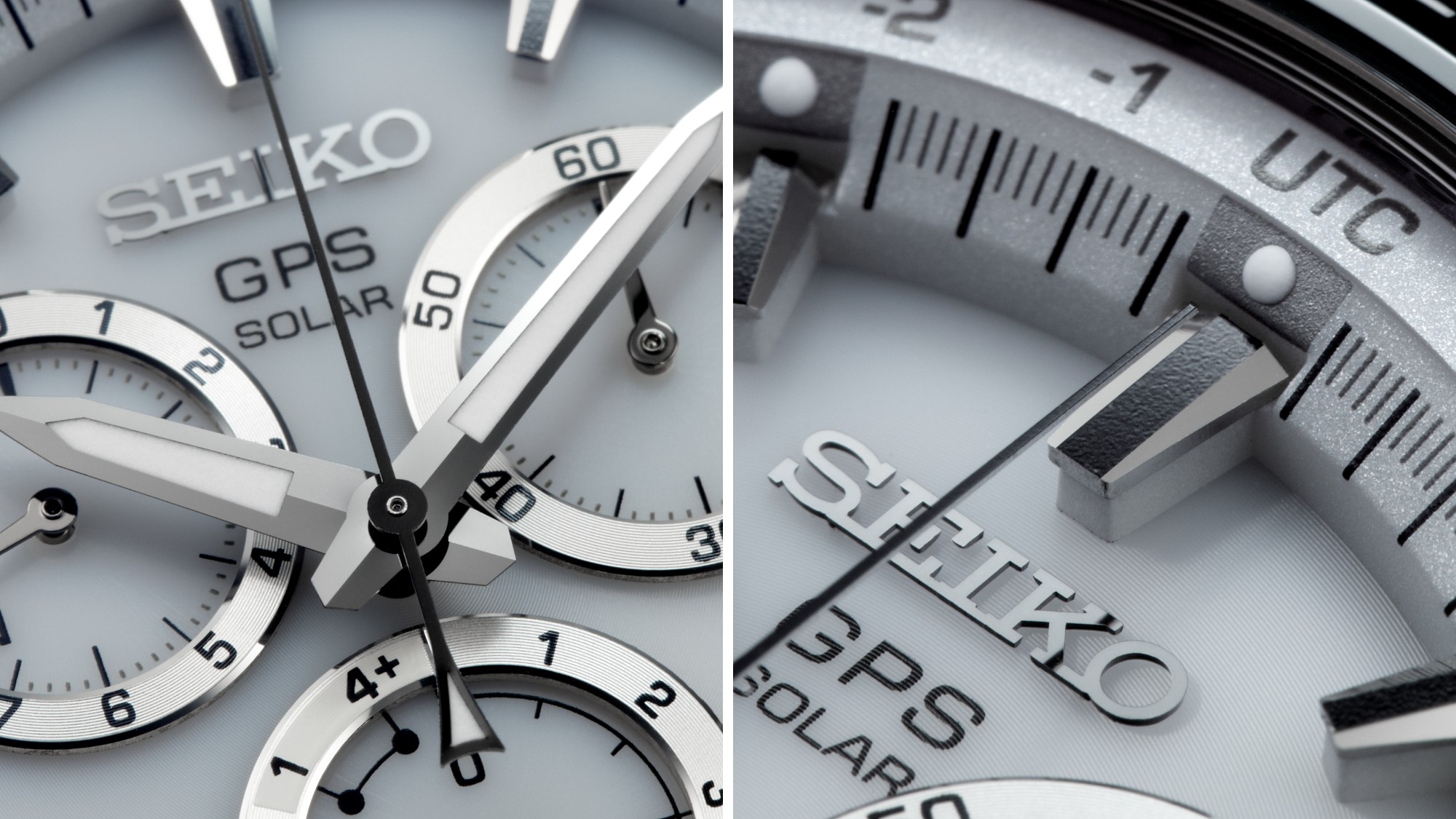
Right: Glossy metallic hour markers are faceted to enhance the luxury feel and to create a three-dimensional appearance.
This 8X series represents the starting point for broadening the user base of Astron GPS Solar while strengthening the identity established by the 7X series.
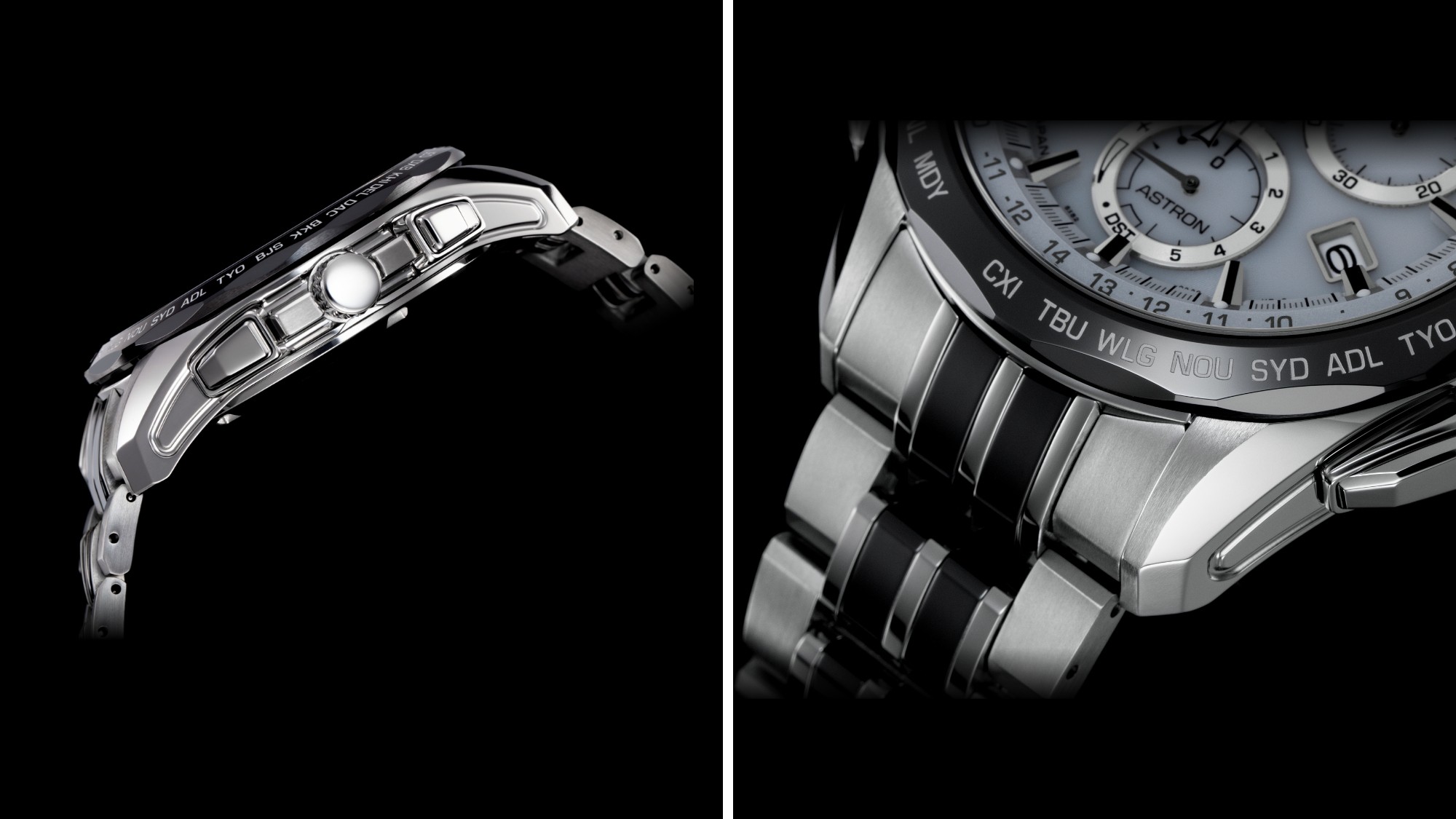
Right: The 12-facet ceramic bezel on SSE001 clearly displays the city names even when viewed from the side, so that the time can be read easily in any location in the world.
2018 <5X Series>
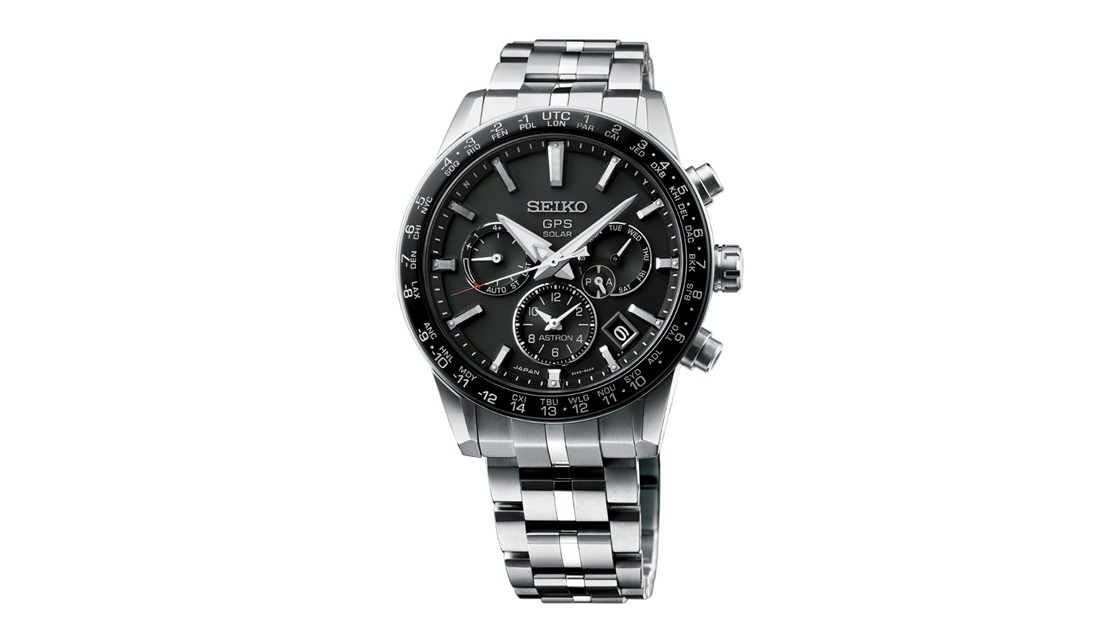
SSE003
This is the first watch in the 5X series. It offers enhanced high-performance features, including a super smart sensor that receives the GPS satellite signals up to twice a day, a time transfer function that instantly switches between two time zones, and automatic adjustment to and from daylight saving time. GPS Solar (Cal.5X53). Ceramic bezel with titanium case (diameter 42.9 mm, thickness 12.2 mm). Water resistance 10 bar. Titanium bracelet. Released in November, 2018.

Taking the evolution to “an ordinary wristwatch” even further
By making the third generation 5X series even smaller, Seiko was able to achieve its aim of “making GPS solar watches very versatile, even though they offer the accuracy of the atomic clocks on board GPS satellites which lose or gain only a second every 100,000 years.” The case size for the first 5X series watch was 42.9 mm in diameter and 12.2 mm thick, which is as close to the size of an ordinary wristwatch as can possibly be. The reduction in volume was achieved in a variety of ways. The power consumption of the GPS module was lowered to about half that of the 8X series and improvements to the reception performance of the IC obviated the need for the larger ring-shaped antenna, allowing offer high performance from a patch antenna that was just a centimeter square.
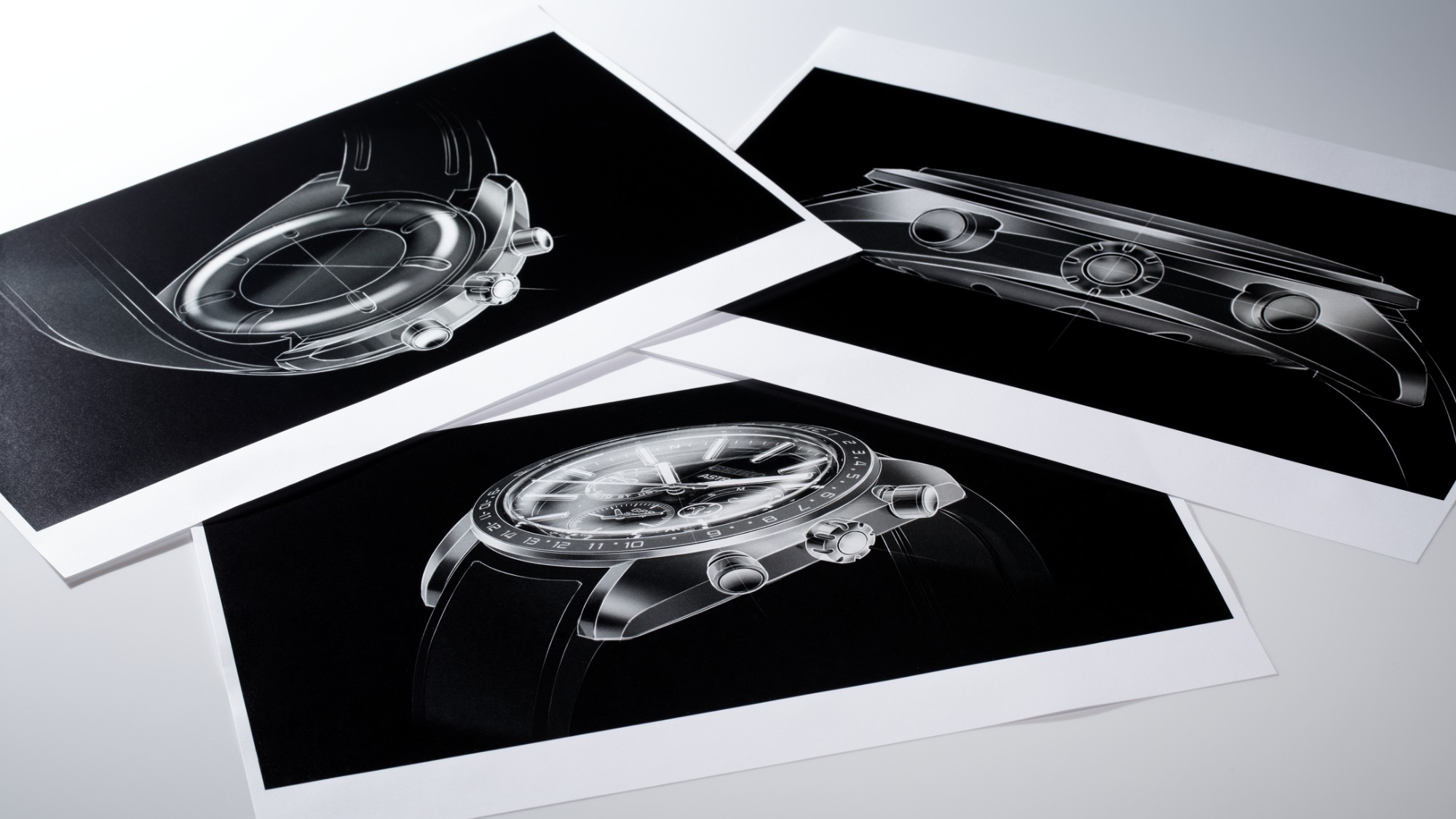
The designer in charge of the design of the 5X series, Masanori Kawamura, points to the SBXC063 while commenting, “We focused on making this latest generation of Astron GPS Solar watches fashionable even in casual attire. The target for this watch was someone heading to the airport wearing jeans and a white T-shirt.”
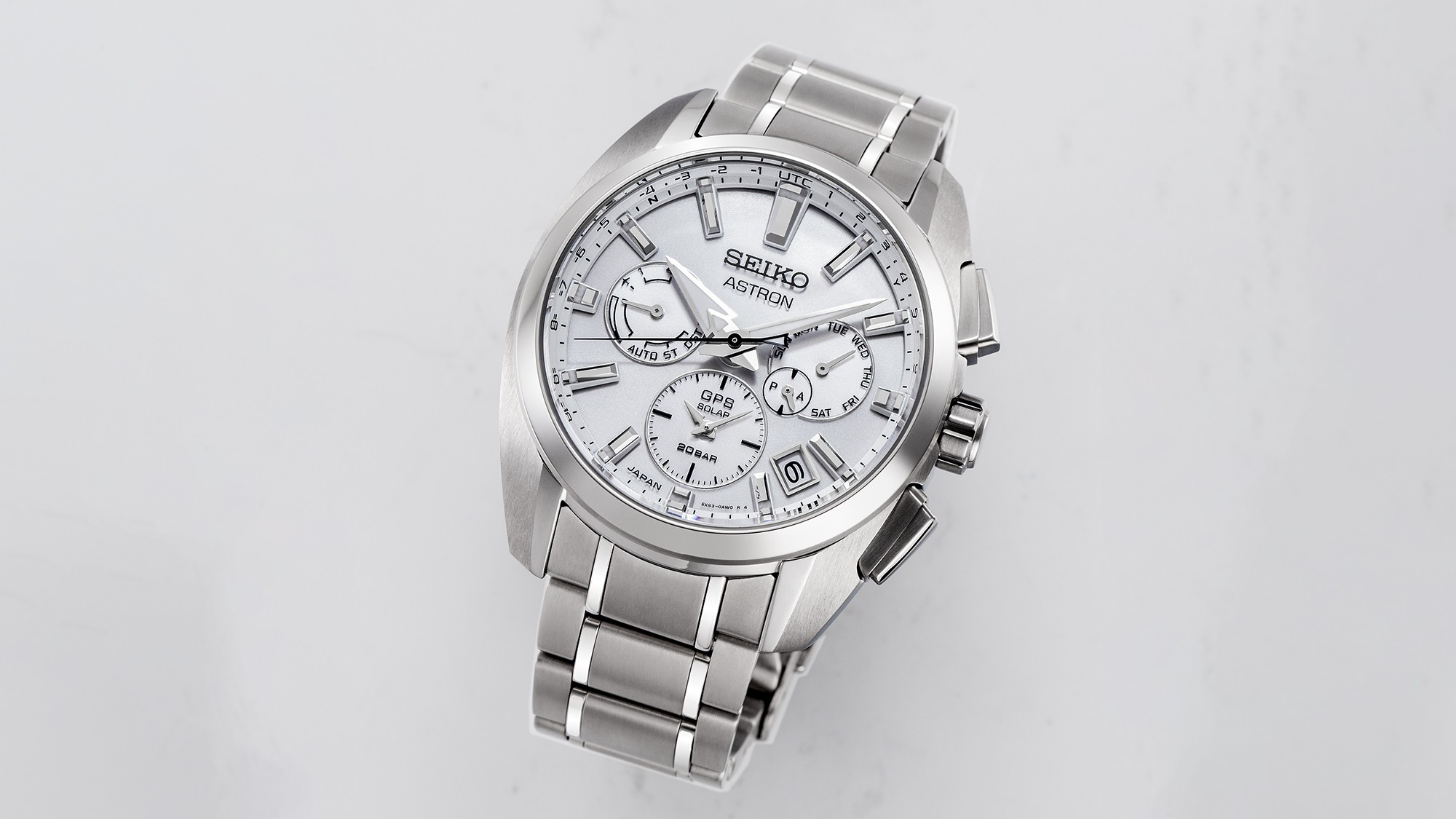
SSH063
This is the first Seiko Astron GPS Solar watch to be made fully of titanium, including the bezel. Note how the case is shaped to follow the outline of the original 1969 Quartz Astron. GPS Solar (Cal.5X53). Titanium case (diameter 42.8 mm, thickness 14.7 mm). 20 bar water resistant. Titanium bracelet.
The sliver white of the dial is more brilliant than the pure white of the 8X series. Even the hi-gloss hour markers have the look and feel of total quality. “To create a three-dimensional look, we intentionally placed the hour markers at an angle instead of making them level with the dial. Controlling the angle of placement for something this small is more difficult than it looks.” The ring antenna was eliminated so that the space between the dial and crystal no longer differed from an ordinary wristwatch. Instead, the designer was tasked with the new challenge of balancing the universal beauty of a wristwatch with the identity of Seiko Astron. The outline, with the cushion-shaped case and single-radius case side, echoes the original Quartz Astron of 1969. “As we developed the 5X series, we decided to once again promote the uniqueness of the original Astron.”
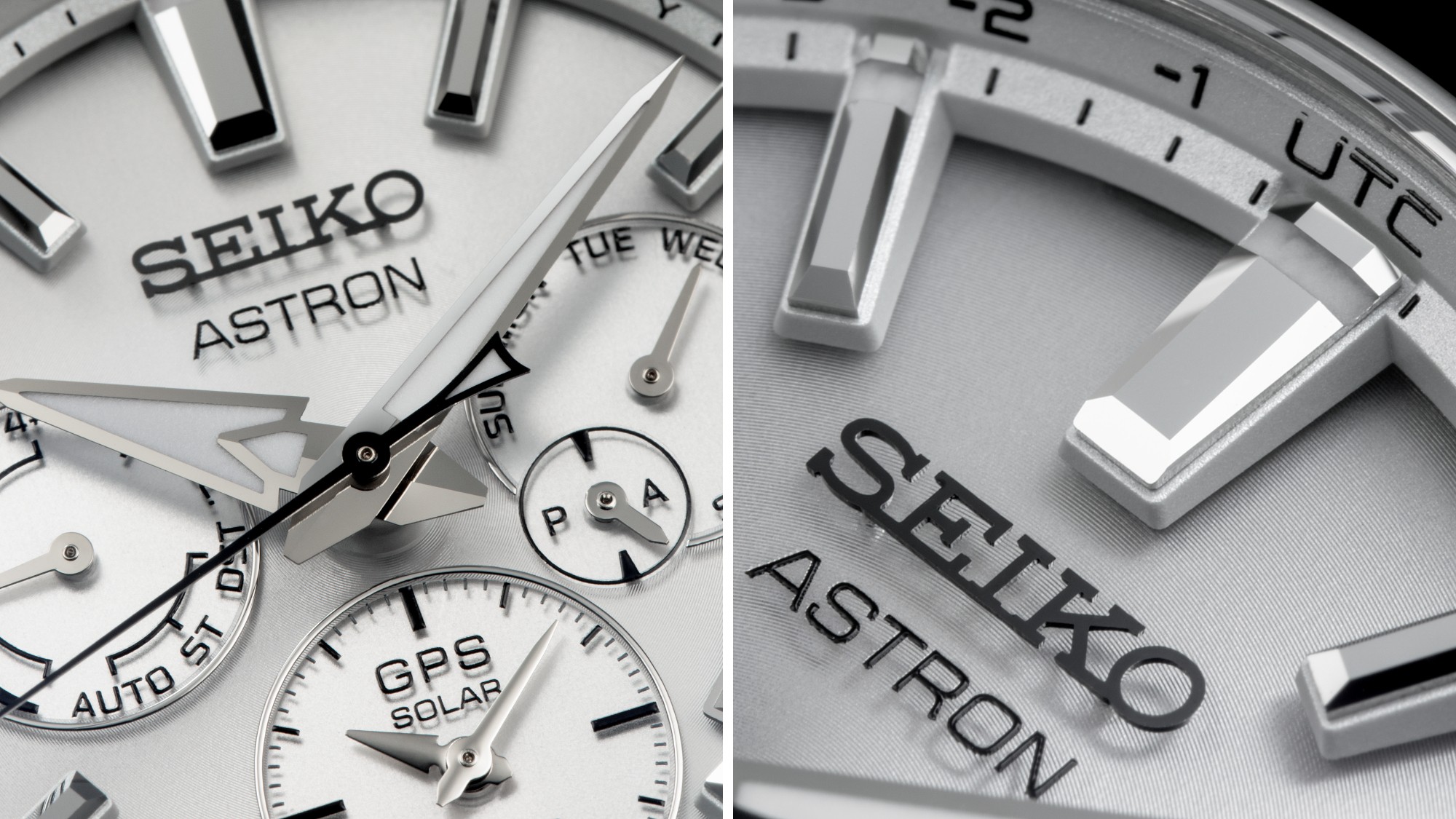
Right: The metallic hour markers mounted at a slight angle have add to the quality appearance. The patch antenna is mounted directly beneath the 12 o’ clock position. According to Kawamura, “The 12 o’ clock index was made as long as possible without interfering with the antenna, while maintaining the overall balance.”
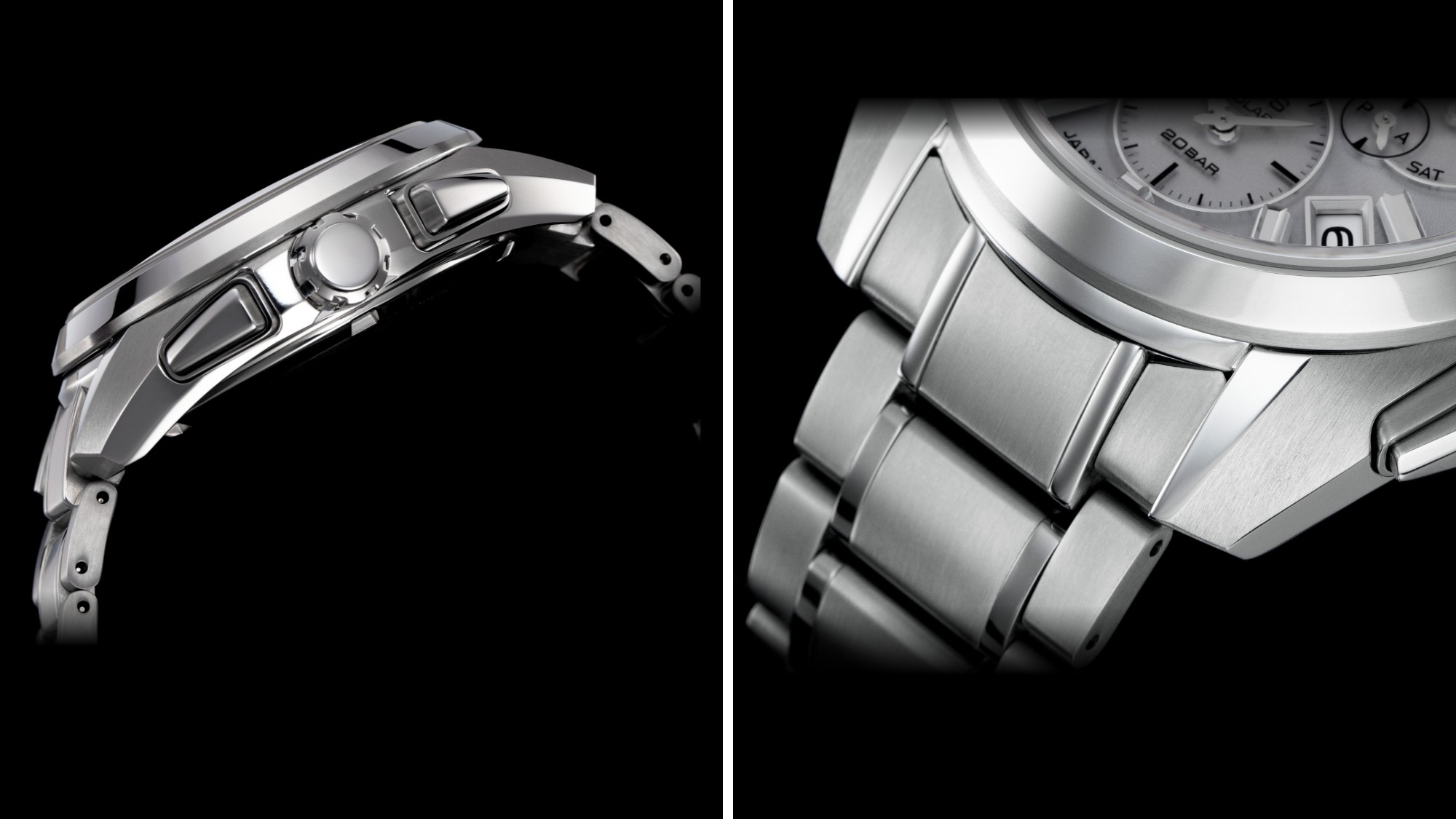
Right: Eliminating the ring antenna eased limitations on the material for the bezel, allowing the use of titanium. The contrast of the mirror surface and hairline finish is exceptional.
2019 <3X Series>
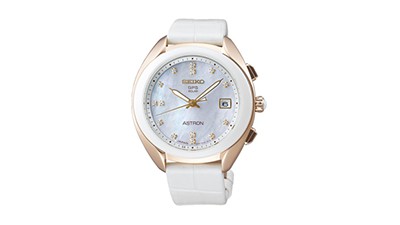
STXD002
Seiko Astron’s first collection for women houses the world’s smallest GPS movement. Compared to the 7X series released in 2012, power consumption is just 25%, and the reception performance is 50% better. GPS Solar (Cal.3X22). Ceramic bezel with stainless steel case (dimensions 45.2 x 39.8 mm, thickness 12.9 mm). Water resistance 10 bar. Crocodile strap. Released in November, 2019.

The Caliber 3X series is the very latest Astron GPS Solar movement. In size, in energy efficiency and in signal reception, it demonstrates how far Seiko’s technology has come since the introduction of the 7X series in 2012. The case is less than 40 mm in diameter thanks to the reception antenna, which no longer even looks like an antenna. Its components are distributed across a single plate.
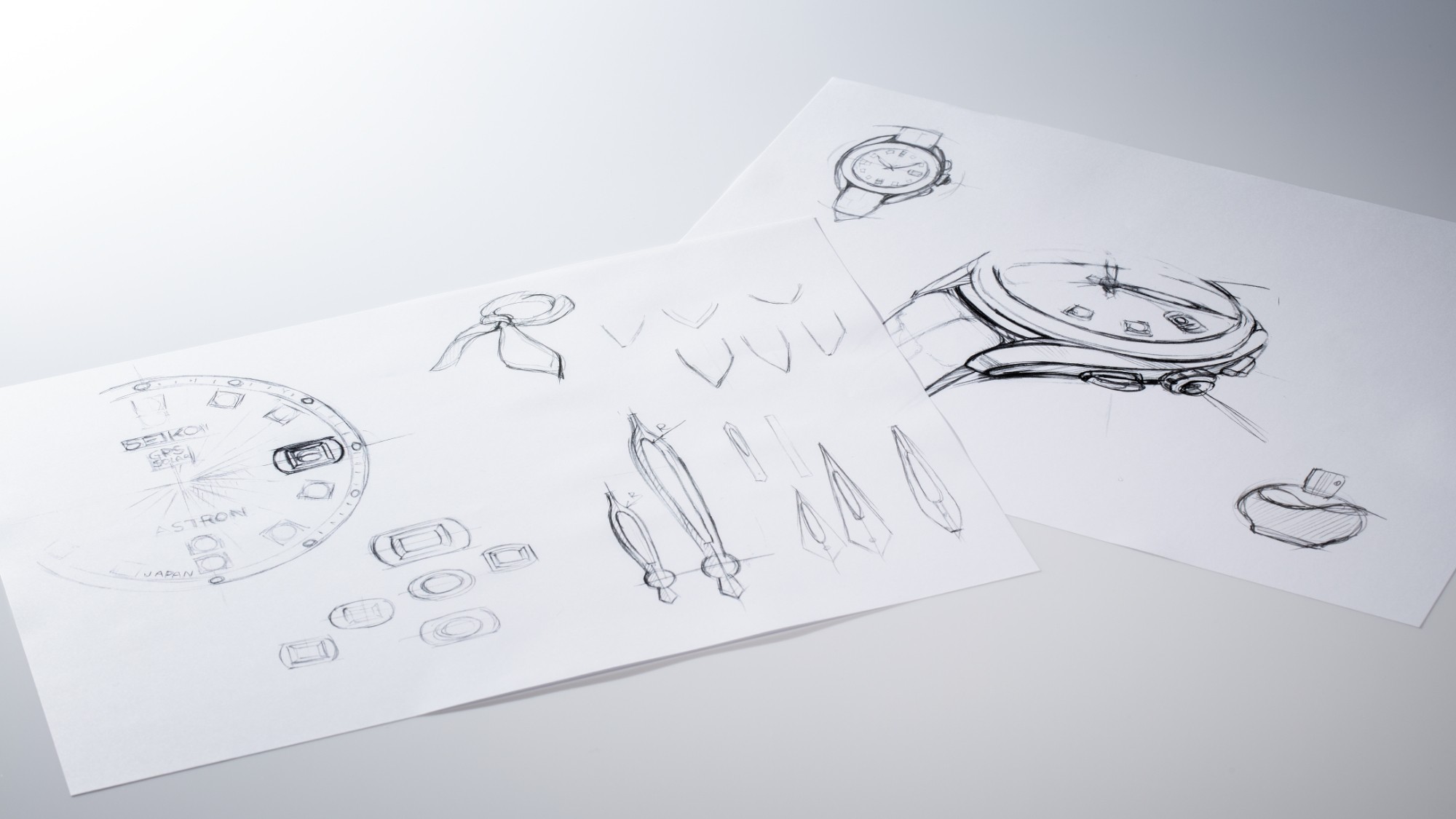
“As this was the first Seiko Astron GPS Solar made especially for women, the design concept was femininity and convenience of use. It’s not as though the Seiko Astron watches up to now were designed exclusively for men. But they did have numerous features and a masculine design, so we thought that we should fully grasp this opportunity to create a women’s watch and so would provide more variety and reach a wider audience,” says Kanako Koriyama, the designer for the 3X series. It offers the simplicity and convenience of just three hands and a date calendar. “I listened to the preference that women told us about for simplicity over functionality.” By eliminating sub-dials and additional hands, further size reduction was possible while maintaining the same high level of reception performance and offering a power reserve of approximately six months.
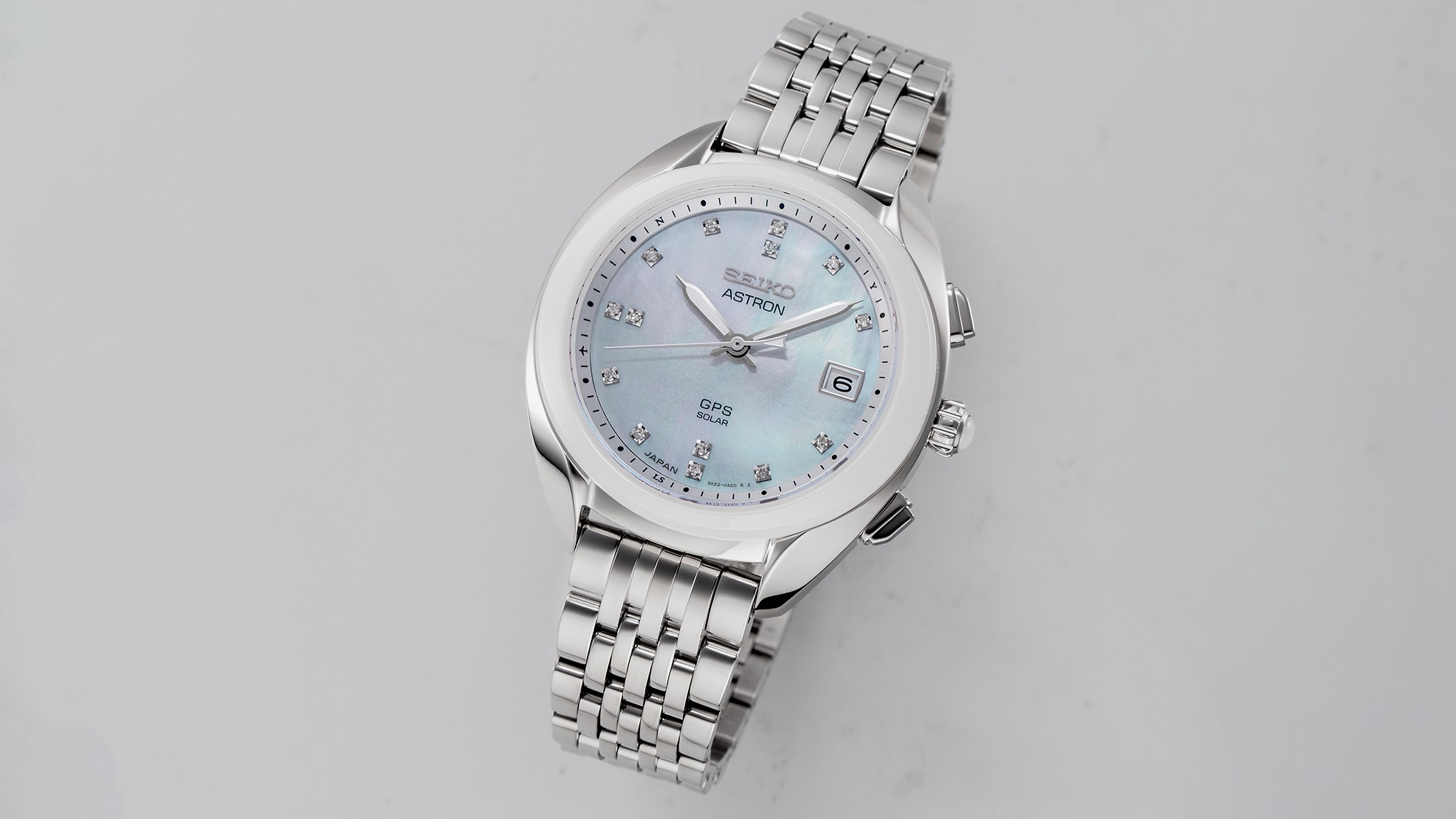
STXD009
This bracelet watch was added to the Seiko Astron women’s collection in December, 2020. GPS Solar (Cal.3X22). Ceramic bezel with stainless steel case (dimensions 45.2 x 39.8 mm, thickness 12.9 mm). Water resistance 10 bar. Stainless steel bracelet.
Its most evident characteristic is its compact design. “By shaping the ceramic bezel as a horizontal oval, we were able to squeeze the vertical profile while giving the design a soft touch. This technique of highlighting curves to bring out softness is used with cosmetics and perfumes, and we made repeated prototypes with a 3D printer to achieve the right balance of size and design.” The shape of the case follows the 5X series in inheriting the silhouette of the original Astron of 1969. Its gentle curves permit the watch to fit well on the wrist.
The mother-of-pearl dial is beautiful to see but is also a technical coup. Despite its textured, rich dial with its myriad color nuances, the performance of the solar panel underneath is unaffected and it accentuates the diamond hour markers. Its elegant appearance almost makes the wearer forget about the GPS functionality that lies within.
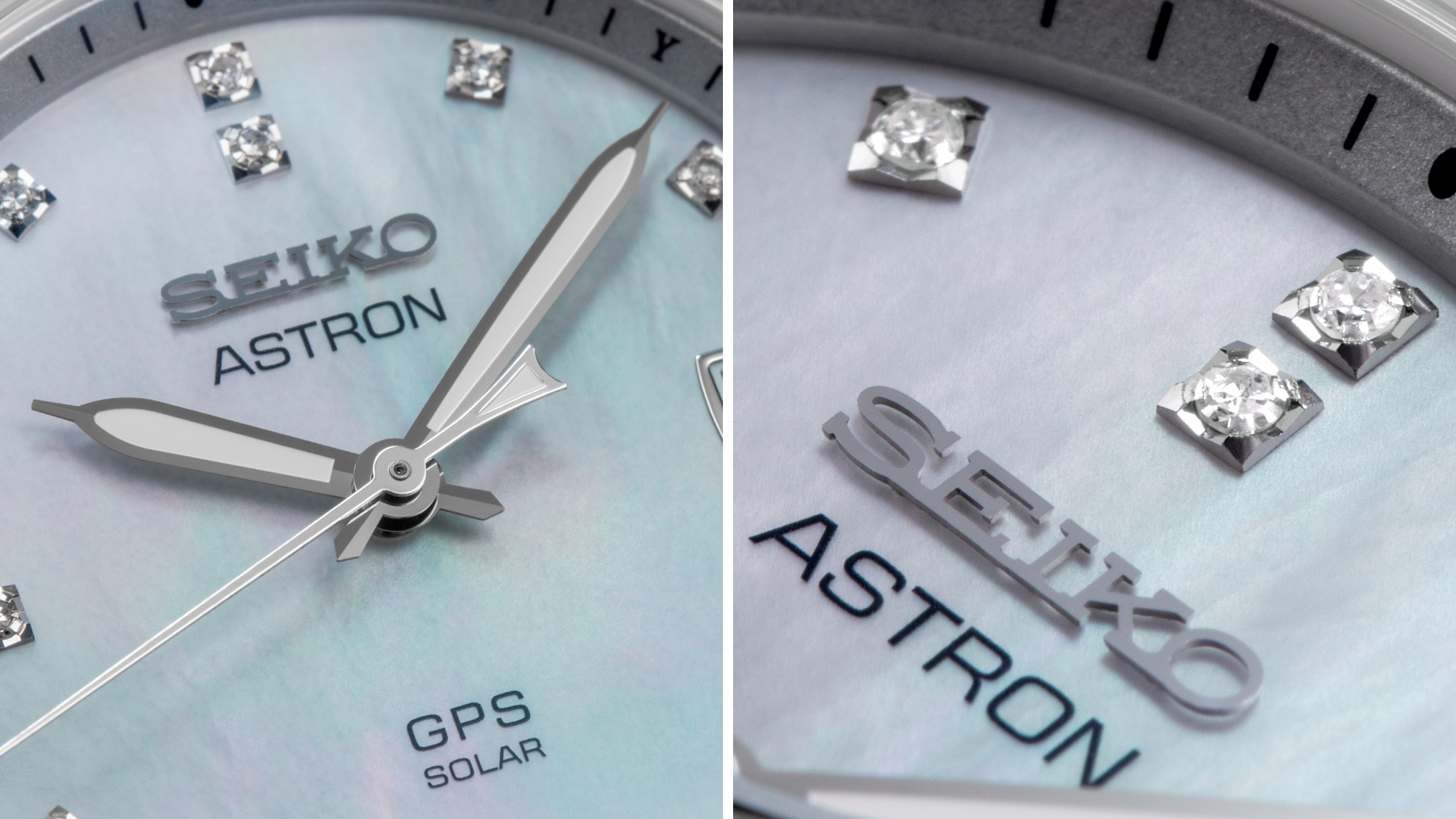
Right: Fourteen diamonds are used for the hour makers.
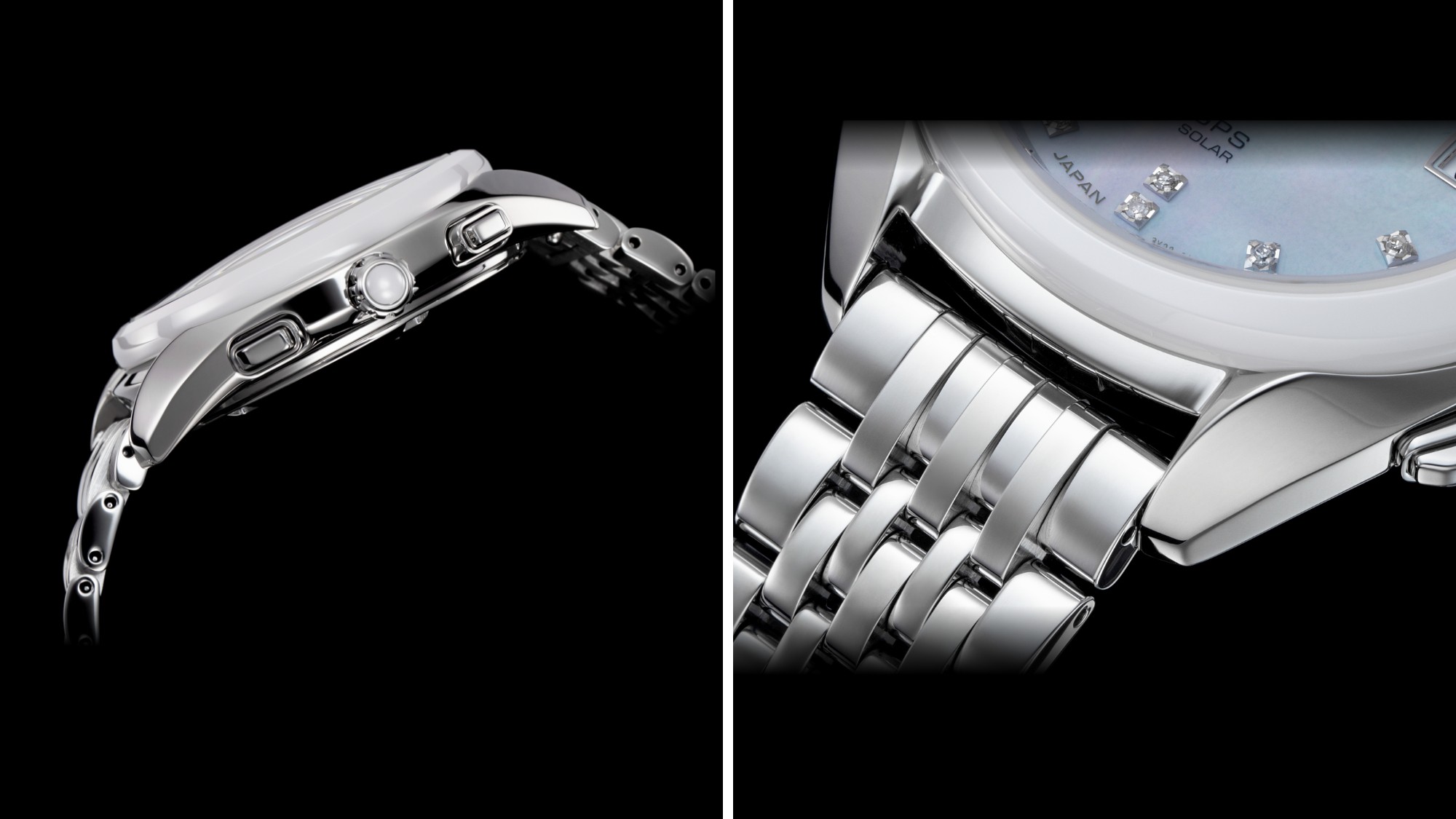
Right: The surface of the seven-row stainless steel bracelet has a super-hard coating.
The Seiko Astron GPS Solar collection

In 2021, Seiko celebrates the 140th anniversary of its foundation by Kintaro Hattori whose credo was that Seiko should always be ‘one step ahead of the rest’. With the 1969 Quartz Astron and the new Astron GPS Solar collection, Seiko has time and again demonstrated that Kintaro’s words have always inspired its people and still inspire Seiko today.
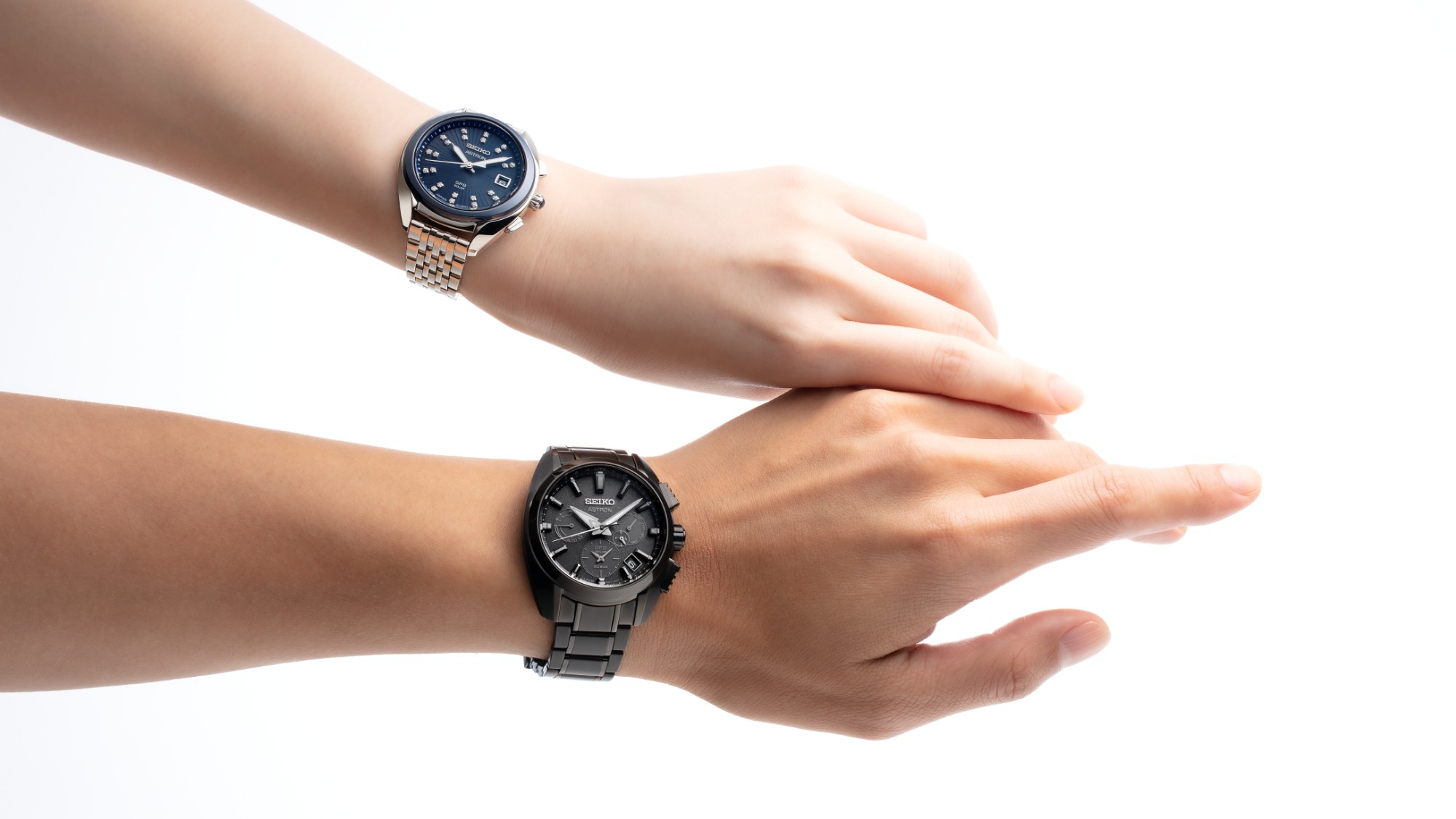
For example, the current Astron models described here all have Seiko’s proprietary hard-coating. These imperceptible details are seldom recognized in the short term, but Seiko’s engineers still pursue this technology, and in recent years have made it even harder. The true value of a product of superior quality can only be appreciated through long-term use. We invite you to experience the joy that comes from being exposed to high quality on a daily basis.

SSH065
The case and bracelet are both of titanium and the watch has 20-bar water resistance so that it can be worn with ease and confidence even in sports situations. Only 103 grams. GPS Solar (Cal.5X53). Titanium case (case dimensions 50.3 x 42.8 mm, thickness 14.7 mm). Water resistance 20 bar. Titanium bracelet.
Special Page

SSH079
This watch features the increasingly popular green on black combination. Inspired by the nebulae of deep space, the dial has tiny specks of gold color. The bezel and sub dials are also highlighted in green. GPS Solar (Cal.5X53). Ceramic bezel with stainless steel case (dimensions 49.9 by 42.7 mm, thickness 13.5 mm). Water resistance 10 bar. Stainless steel bracelet.
Special Page

SSH047
The bright silver dial, glossy indexes and metal-rimmed sub dials provide a metallic look and feel. Matches any stylish outfit. GPS Solar (Cal.5X53). Stainless steel case (dimensions 49.9 by 42.7 mm, thickness 13.3 mm). Water resistance 10 bar. Stainless steel bracelet.

SSH051
The gunmetal colored dial combined with a blue second hand set a unique tone. This limited edition is available only at the Seiko Boutiques, and has the SPECIAL EDITION indication and an individual serial number on the case back. GPS Solar (Cal.5X53). Stainless steel case (dimensions 49.9 by 42.7 mm, thickness 13.3 mm). Water resistance 10 bar. Stainless steel bracelet.